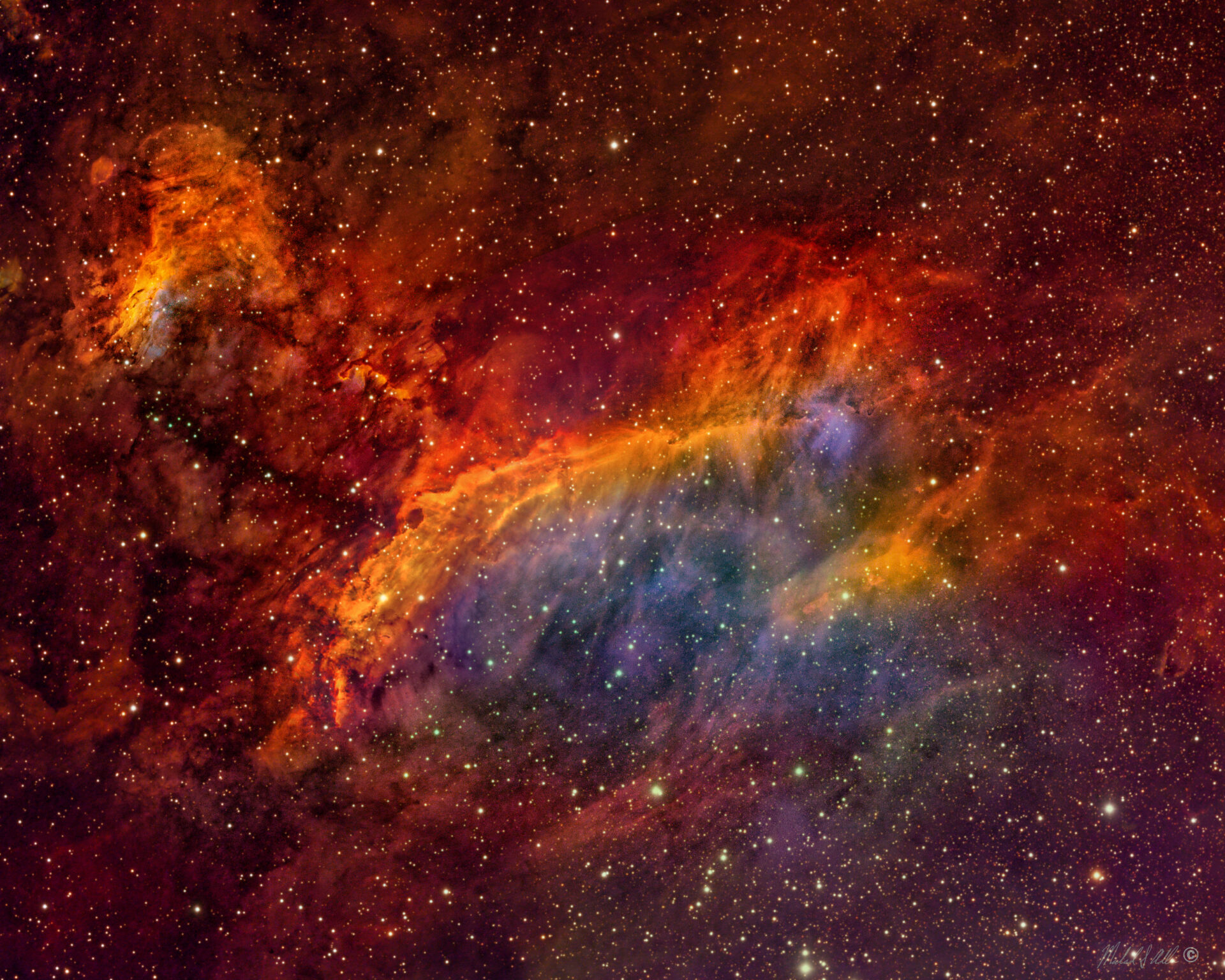Optics: Astro Physics RH305
Mount: Software Bisque Paramount ME
Camera: SBIG STXL 16200
Filters: Astrodon 5nm Ha, Oiii, Siii, LRGB
Dates/Times: April, 2019
Location: Yass, New South Wales, Australia
Exposure Details: Ha,Oiii,Sii=15x30min, R,G,B=9x20min, total 73 images over 31 hours
Acquisition: MaxImDL
Processing: MaxImDL,StarXTerminator Photoshop CC2022, Images were aligned and stretched in MaximDL, Color image was created in PS 2022 in Hubble palette by pasting into channels, Stars were removed from NB image, Stars created using RGB data in MaximDL and added into image in PS
Prawn Nebula, IC 4628
Original price was: $65.00.$52.50Current price is: $52.50.
The Prawn Nebula, IC 4628 South of Antares, in the tail of the nebula-rich constellation Scorpius, lies emission nebula IC 4628. Nearby hot, massive stars, millions of years young, irradiate the nebula with invisible ultraviolet light, stripping electrons from atoms. The electrons eventually recombine with the atoms to produce the visible nebular glow, dominated by the emission of hydrogen. At an estimated distance of 6,000 light-years, the region shown is about 250 light-years across, spanning over three full moons in the sky. The image is catalogued as IC 4628 but the shape suggests to some that it looks like a prawn and is thus known as the Prawn Nebula. My version looks more like a duck with its head in the upper left and the body and tail in the lower right with its colorful yellow and blue feathers. The dramatic false color image highlights the contributions of hydrogen, sulfur, and oxygen, energized by intense ultraviolet radiation from the nearby stars, to the glow of the nebula. The image is in the Hubble palette where green in the image comes from Hydrogen gas, red comes from Sulfur and blue comes from Oxygen. The image was taken in New South Wales Australia using an Astro Physics RH305 telescope. It consists of 73 images taken over a total of 31 hours. The raw images were aligned, stacked and stretched in MaximDL and assembled into a color image in Photoshop CC2022. The stars were removed and then added back in using a true color RGB image.


